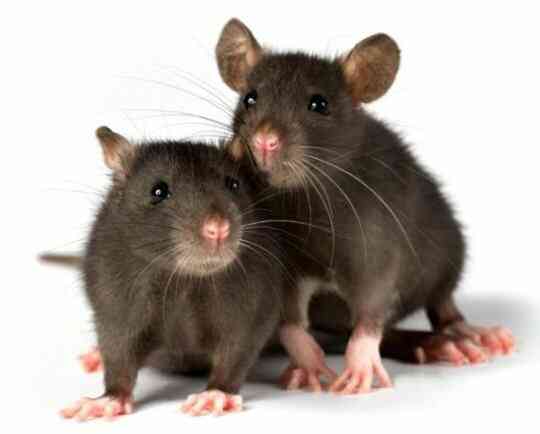Rats — cunning, intelligent and amazingly tenacious creatures that can survive in almost any, even the most extreme conditions. The population of rats is huge in any city, because next to people it is easier for rats to find food and warmth than in the wild. Unfortunately, wild rats are carriers of various diseases, which is the reason for the hostile attitude of many people towards them.
Interesting facts about rats
- Rats — beings are very social, they always live in packs. Ornamental rats should also not be kept alone — they literally wither away from longing without communication with their own kind.
- Rats are very smart, and if desired, they can be easily trained.
- In captivity, rats live an average of two years, on will — half as much.
- The ability of rats to anticipate future events is still a mystery. For example, rats leave military training grounds en masse in advance of testing weapons like bombs there.
- Rats bring food to sick and inactive relatives, saving them from starvation, and warm them with the warmth of their bodies.
- Rats appeared on Earth 47-48 million years before the ancestors of modern humans.
- There are about twice as many rats in the world as people.
- In some countries, for example, in Vietnam, rats eaten (Facts about Vietnam).
- An angry rat is capable of jumping two meters high.
- Due to the lack of fear of heights, rats can fall and break.
- A rat’s heart beats up to 500 beats per minute, that is, about ten times faster than ours.
- They are great swimmers, the official record — 29 kilometers that the rat swam without a break. A rat can swim for up to three days, demonstrating miracles of endurance.
- Contrary to popular belief, these animals are very clean. The only body part they rarely clean themselves — scaly tail.
- The rats themselves do not carry the infection — this is done by fleas and other small parasites that live in their fur.
- They, like people, know how to laugh. In their own way, of course.
- A rat can travel up to fifty kilometers in a day.
- Like other rodents, rats grow their teeth throughout their lives, so they have to grind down.
- The rats communicate with a squeak, and, by the way, they understand each other perfectly. But more often, they communicate with each other by ultrasonic throat whistling, which the human ear is unable to hear.
- It takes only a tiny fraction of a second for a rat to determine the direction to the source of the detected smell.
- Without water, this animal can live longer than any other mammal on Earth.
- A rat consumes 10-12 kilograms of food per year.
- They dream, just like people.
- The intelligence level of a rat is higher than that of a cat.
- In the Middle Ages, one of the European bishops ordered the excommunication of the entire rat race from the church.
- The number of bones in the skeleton of a rat practically coincides with the number of bones in the skeleton human.
- In a year, a female rat can give birth to hundreds of rats.
- Rats never overeat, eating exactly as much as they need. However, they stock up like hamsters (interesting facts about hamsters).
- Rats in nature prey on various small animals, such as mice and lizards.
- Rats have a memory for everyone envy — once having followed a certain route, a rat will remember it until death.
- Rats have a very developed sense of compassion for their own kind.
- One large rat colony can number up to 2000 individuals.
- Rats can even gnaw through concrete and iron.
- The rat pack can attack even very large prey, like a dog.
- In the Indian rat temple, Karni Mata, more than 20 thousand rats live.
